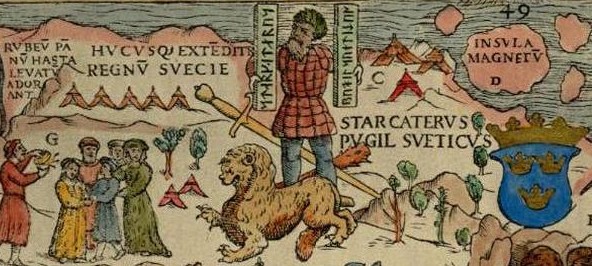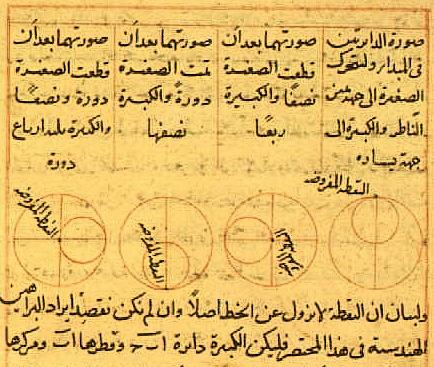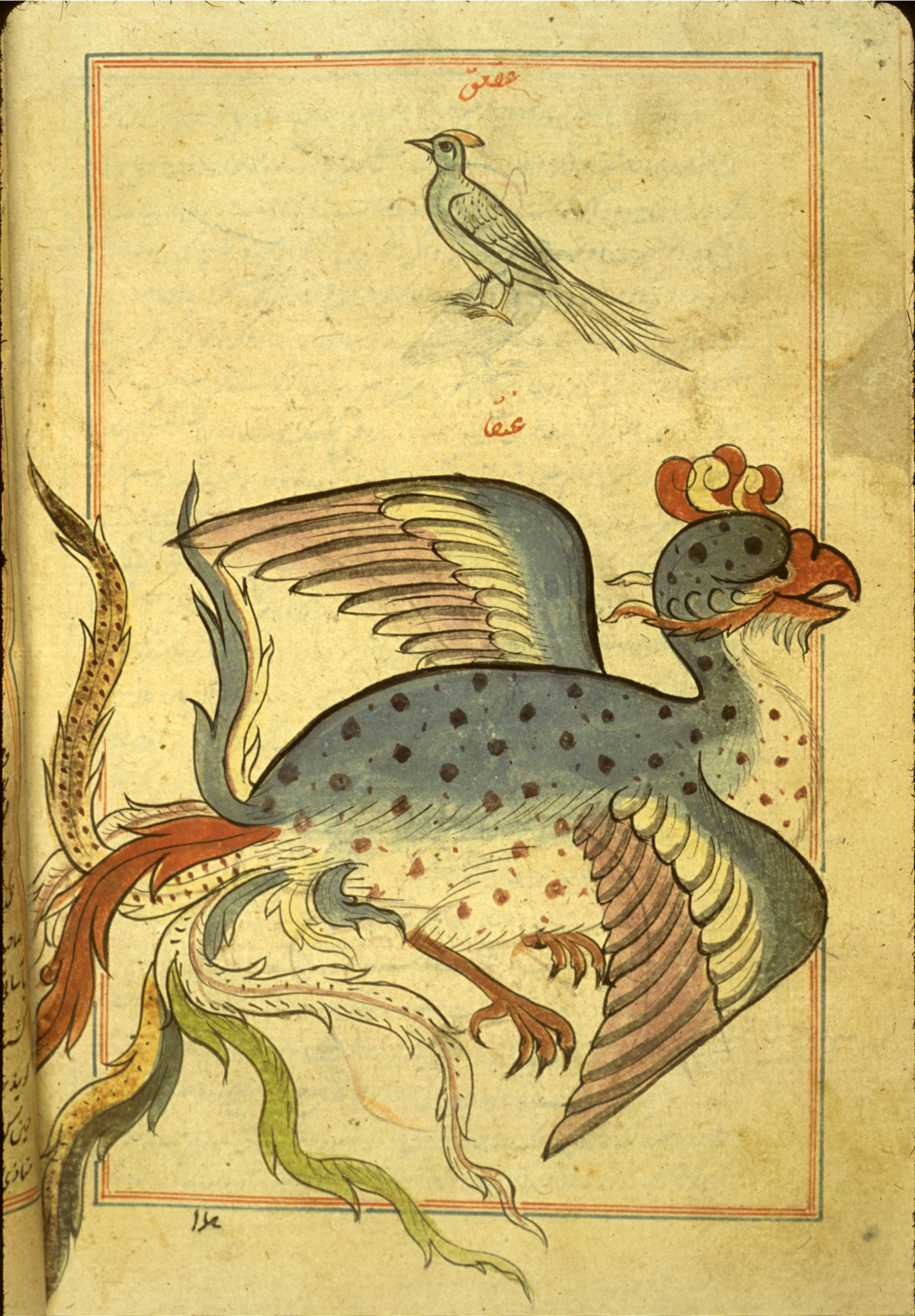|
Cafcuh
Mount Qaf, or Qaf-Kuh, also spelled Cafcuh and Kafkuh (), or Jabal Qaf, also spelled Djebel Qaf (); ''Koh-i-Qaf'', also spelled ''Koh-Qaf'' and ''Kuh-i-Qaf'' or ''Kuh-e Qaf'' (); or ''Kaf Dağı'' in Turkish is a legendary mountain in the popular mythology of the Middle East. In some early Arab traditions, Mount Qaf is said to be the homeland of the jinn and was made out of shining emerald by God. Iranian tradition Historically Iranian power never extended over all of the Northern Caucasus and ancient lore shrouded these high mountains in mystery. In Iranian tradition this mountain could be any of the following: * The highest mountain in Qafqaz * The "unknown" mountain referred to as ''Gapkuh''''Qāf'' is the Arabized form of the Middle Persian word ''gâp'' meaning "unknown". The oldest mention of ''Gapkuh'' or the "unknown mountain" is in an inscription of Shapur I (241-272 AD) for the mountains between the Black Sea and the Caspian Sea. The name of the Caucasus Mountains is s ... [...More Info...] [...Related Items...] OR: [Wikipedia] [Google] [Baidu] |
Islamic Cosmology
Islamic cosmology is the cosmology of Islamic societies. Islamic cosmology is not a single unitary system, but is inclusive of a number of cosmological systems, including Quranic cosmology, the cosmology of the Hadith collections, as well as those of Islamic astronomy and astrology. Broadly, cosmological conceptions themselves can be divided into thought concerning the physical structure of the cosmos ( cosmography) and the origins of the cosmos (cosmogony). In Islamic cosmology, the fundamental duality is between Creator (God) and creation. Quranic cosmology Overview In Quranic cosmography, the cosmos is primarily constituted of seven heavens and earth. Above them is the Throne of God, a solid structure. The Quran indicates a round Earth and says the physical land on the ground has been spread. The definition and understanding of such a "spreading of physical land" varies based on scholars and academics. Heavens and the earths The most important and frequently referre ... [...More Info...] [...Related Items...] OR: [Wikipedia] [Google] [Baidu] |
Hatim Al-Tai
Hatim al-Tai (, 'Hatim of the Tayy tribe'; died 578), full name Ḥātim bin ʿAbd Allāh bin Saʿd aṭ-Ṭāʾiyy () was an Arab knight, chieftain of the Tayyi tribe of Arabia, ruler of Shammar, and poet who lived in the last half of the sixth into the beginning of the seventh century. Although he was considered a well-established poet in his time, today he is best known for his altruism. Additionally, he is known to be a model of Arab manliness. Al-Tai is associated with the Lakhmid court in Hira, especially under its most famous king Al-Mundhir III ibn al-Nu'man. Stories about his extreme generosity have made him an icon among Arabs up until today, as evident in the proverbial phrase "more generous than Hatim" (). According to Arab writer and poet Ibn Abd Rabbih, he was one of three people who reached the highest point of generosity in the pre-Islamic era, the other two were Ka'b ibn Mama and Harim ibn Sinan al-Murri. Al-Tai's generosity and chivalry have become prover ... [...More Info...] [...Related Items...] OR: [Wikipedia] [Google] [Baidu] |
Dante Alighieri
Dante Alighieri (; most likely baptized Durante di Alighiero degli Alighieri; – September 14, 1321), widely known mononymously as Dante, was an Italian Italian poetry, poet, writer, and philosopher. His ''Divine Comedy'', originally called (modern Italian: ) and later christened by Giovanni Boccaccio, is widely considered one of the most important poems of the Middle Ages and the greatest literary work in the Italian language. Dante chose to write in the vernacular, specifically, his own Tuscan dialect, at a time when much literature was still written in Latin, which was accessible only to educated readers, and many of his fellow Italian poets wrote in French or Provençal dialect, Provençal. His ' (''On Eloquence in the Vernacular'') was one of the first scholarly defenses of the vernacular. His use of the Florentine dialect for works such as ''La Vita Nuova, The New Life'' (1295) and ''Divine Comedy'' helped establish the modern-day standardized Italian language. His wo ... [...More Info...] [...Related Items...] OR: [Wikipedia] [Google] [Baidu] |
Rupes Nigra
The Rupes Nigra ("Black Rock"), a phantom island, was believed to be a black rock located at the North Magnetic Pole or at the geographic North Pole itself. Described by Gerardus Mercator as 33 French miles in size, it provided a supposed explanation for why all compasses point to this location. The idea came from a lost work titled '' Inventio Fortunata'', and the island featured on maps from the sixteenth and seventeenth centuries, including those of Mercator and his successors. Mercator described the island in a 1577 letter to John Dee John Dee (13 July 1527 – 1608 or 1609) was an English mathematician, astronomer, teacher, astrologer, occultist, and alchemist. He was the court astronomer for, and advisor to, Elizabeth I, and spent much of his time on alchemy, divination, ...: References Phantom islands of the Arctic Ocean Islands of the Arctic Ocean North Pole {{geography-journal-stub ... [...More Info...] [...Related Items...] OR: [Wikipedia] [Google] [Baidu] |
Cosmology In Medieval Islam
Islamic cosmology is the cosmology of Islamic societies. Islamic cosmology is not a single unitary system, but is inclusive of a number of cosmological systems, including Quranic cosmology, the cosmology of the Hadith collections, as well as those of Islamic astronomy and Astrology in the medieval Islamic world, astrology. Broadly, cosmological conceptions themselves can be divided into thought concerning the physical structure of the cosmos (cosmography) and the origins of the cosmos (cosmogony). In Islamic cosmology, the fundamental duality is between Creator (God in Islam, God) and creation. Quranic cosmology Overview In Quranic cosmography, the cosmos is primarily constituted of seven heavens and earth. Above them is the Throne of God, a solid structure. The Quran indicates a round Earth and says the physical land on the ground has been spread. The definition and understanding of such a "spreading of physical land" varies based on scholars and academics. Heavens and t ... [...More Info...] [...Related Items...] OR: [Wikipedia] [Google] [Baidu] |
Bahamut
Bahamut, or Bahamoot ( ; ), according to Zakariya al-Qazwini, is a monster that lies deep below, underpinning the support structure that holds up the earth. In this conception of the world, the earth is shouldered by an angel, who stands on a slab of gemstone, which is supported by the cosmic beast (ox) sometimes called Kuyutha'(/Kuyuthan)/Kiyuban/Kibuthan (plausibly a corruption or misrendering of Hebrew לִוְיָתָן "Leviathan"). Bahamut carries this bull on its back, and is suspended in water for its own stability. Balhūt is a variant name found in some cosmographies. In the earliest sources, the name is Lutīyā, with Balhūt given as a byname and Bahamūt as a nickname. Orthography ''Bahamūt'' is the spelling given in al-Qazwini (d. 1283)'s cosmography., p. 216 and note 198. ''Bahamoot'' is Edward Lane's transcribed spelling. ''Balhūt'' is the alternate spelling given in Yaqut al-Hamawi (d. 1229)'s geographic work and copies of Ibn al-Wardi (d. 1457)'s work. ... [...More Info...] [...Related Items...] OR: [Wikipedia] [Google] [Baidu] |
Kujata
Kuyūthā () is the cosmic bull in Cosmology in medieval Islam#Cosmography, medieval Islamic cosmography. It is said to carry on its back the angel who shoulders the earth and the rock platform upon which the angel stands. The bull is said to stand on the giant fish or whale, Bahamut. The bull is variously described as having 40,000 horns and legs, or as many eyes, ears, mouths and tongues in the oldest sources. The number of appendages can vary in later versions. Its breathing is said to control the tides of the ocean. Kīyūbān () or Kibūthān () also appear in printed editions of Abu Yahya Zakariya' ibn Muhammad al-Qazwini, Qazwini's cosmography. These have been claimed to be corruptions of Leviathan (). Alternate names include Al-Rayann. Kuyootà, Kuyoothán were forms of the name as transcribed by Edward William Lane, Edward Lane, and given as Kuyata (Spanish), Kujata (first English translation, 1969), and Quyata (revised English translation) in various editions of Jorge ... [...More Info...] [...Related Items...] OR: [Wikipedia] [Google] [Baidu] |
ʿAjā'ib Al-makhlūqāt Wa Gharā'ib Al-mawjūdāt
''Aja'ib al-Makhluqat wa Ghara'ib al-Mawjudat'' () or ''The Wonders of Creatures and the Marvels of Creation'' is an important work of paradoxography and cosmography by Zakariya al-Qazwini, who was born in Qazwin in 1203 shortly before the Mongol invasion of the Khwarazmian Empire. Background to the work Qazwini's ''Aja'ib al-Makhluqat'' was criticized for being less than original. Substantial parts of his work are derivative of Yaqut al-Hamawi's ''Mu'jam al-Buldan''. Qazwini mentions fifty names as his sources, the most important of whom are old geographers and historians such as Istakhri, Ahmad ibn Fadlan, al-Masudi, Ibn Hawqal, al-Biruni, Ibn al-Athir, al-Maqdisi, and al-Razi. Even though Qazwini's work is a compilation of known and unknown sources, it influenced later works of Islamic cosmology and Geography and cartography in medieval Islam, Islamic geography through its style and language. Qazwini's cosmography is not pure science but was intended to entertain its readers b ... [...More Info...] [...Related Items...] OR: [Wikipedia] [Google] [Baidu] |
Zakariya Al-Qazwini
Zakariyya' al-Qazwini ( , ), also known as Qazvini (), (born in Qazvin, Iran, and died 1283), was a Cosmography, cosmographer and Geography in medieval Islam, geographer. He belonged to a family of jurists originally descended from Anas bin Malik (a companion of the Islamic prophet Muhammad) which had been well established in Qazvin long before al-Qazwini was born. His most famous work is the Aja'ib al-Makhluqat, (), a seminal work in cosmography. He is also the author of the geographical dictionary (). Career Born in Qazvin to a Persianized family of Arab ancestry, al-Qazwini served as a legal expert and judge in several localities in Iran. He traveled around in Mesopotamia and the Levant, and finally entered the circle patronized by the Ilkhanid governor of Baghdad, Ata-Malik Juvayni (d. 1283 CE). It was to the latter that al-Qazwini dedicated his famous cosmography titled Aja'ib al-Makhluqat, (). This treatise, frequently illustrated, was immensely popular and is preser ... [...More Info...] [...Related Items...] OR: [Wikipedia] [Google] [Baidu] |
Jabulqa And Jabulsa
Jabulqa and Jabulsa () or Jabalq and Jabars (), are two legendary cities mentioned in Islam. They are said to be made of emerald and visited by the Islamic prophet Muhammad in his Night Journey. In a conversation between Muhammad and his cousin Ali ibn Abi Talib, the cities are described as situated in darkness and contiguous to the primeval Mount Qaf. Jabulqa is located in the eastern-most corner of the world and Jabulsa on the western-most one. The figure Dhu al-Qarnayn, mentioned in the Quran, is said to have tried to visit the cities but gave up halfway. However, he was successful in seeing the places where the sun rises and sets. Each city is 12,000 parasangs (at least 36,000 miles) long and wide, with 12,000 gates, and each are guarded by 12,000 men until the Day of Resurrection, when the Qa'im will appear. In the early '' Basa'ir al-darajat'', these cities were inhabited by archetypal male believers who are neither human, jinn nor angels (but whose service to God is si ... [...More Info...] [...Related Items...] OR: [Wikipedia] [Google] [Baidu] |
Roc (mythology)
The roc is an enormous legendary bird of prey in the popular mythology of the Middle East. The roc appears in Arab geographies and natural history, popularized in Arabian fairy tales and sailors' folklore. Ibn Battuta tells of a mountain hovering in the air over the China Seas, which was the roc. The story collection ''One Thousand and One Nights'' includes tales "Abd al-Rahman the Maghribi's Story of the Rukh" and "Sinbad the Sailor", both of which include the roc. Etymology The English form ''roc'' originates via Antoine Galland's French from Arabic ''ruḵḵ'' () and that from Persian language, Persian ''ruḵ'' ().roc /[phonetic transcription]/ n. Also (earlier) ✝roche, ✝rock, ✝ruc(k), ✝rukh. L16 [Sp. ''rocho'', ''ruc'' f. Arab. ''ruḵḵ'', f. Pers. ''ruḵ''.] A mythical bird of Eastern legend, imagined as being of enormous size and strength (''The New Shorter Oxford English Dictionary'', Clarendon Press, Oxford, Volume 2 N-Z, 1993 edition, page 2614) In both lang ... [...More Info...] [...Related Items...] OR: [Wikipedia] [Google] [Baidu] |
Anqa
Anqa (), also spelled '' 'Anqa' '', or ''Anka'', or ''Anqa Mughrib'' or ''Anqa al-Mughrib'' (), is a golden mysterious or fabulous female bird in Arabian mythology. She is said to fly far away and only appear once in ages. However, it is also said that she can be found at "the place of the setting of the sun". Etymology and notes The word ''ʿanqāʾ'' is the feminine form of ''ʾaʿnaq'' () meaning "long-necked" and also "long and thick in the neck". This probably implies that the bird resembles a heron or crane (bird), crane (or other long-necked birds) or simply has a large strong neck like an eagle or falcon (or other birds of prey, raptors) with which she was identified by some. The word ''muḡrib'' has a number of meanings signifying "strange, foreign", "distant, remote", "west, sunset", "desolated, unknown" and "white, dawn" and expresses the enigma as well as unreality associated with the creature. ''ʿAnqāʾ'', however, is also related to ''ʿanāq'' ( "misfortune, h ... [...More Info...] [...Related Items...] OR: [Wikipedia] [Google] [Baidu] |









